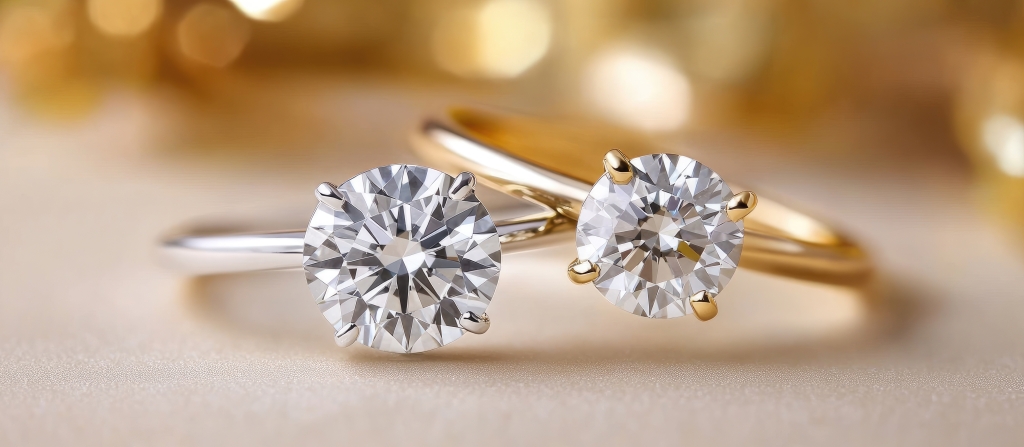The two most popular choices for engagement ring metals are gold and platinum. Grooms and future brides should do their research to determine what’s best for their ring. In this blog, we’ll present the potential benefits and drawbacks of both options so that you can make an informed decision.
-
Understanding Gold and Platinum
-
Maintenance and Durability Over Time
-
Cost Comparison
-
Skin Sensitivity and Allergies
-
Metal Color
Understanding Gold and Platinum
Gold and platinum are both high-value, high-quality precious metals, but there are a few key differences between them.Gold: The Classic Choice
To understand gold, you have to understand the karat system–those little numbers you see next to gold jewelry with the letter ‘k’ attached. The karat system measures the purity of gold. Gold is a very soft and malleable metal in its natural state. This means that it can bend, be scratched easily, and even lose its shape. To make gold safe to use in jewelry, it is combined with small amounts of other metals. These combinations are called alloys.The metals most frequently used in alloys include zinc, copper, nickel, and silver. Alloying does not affect the quality or appearance of the gold; it just makes it sturdy enough for frequent wear. Non-gold metals are also used to change the color of the gold. For instance, white gold can be made by combining yellow gold with silver or another white metal.
The karat system tells you what percentage of a piece of jewelry is pure gold, and what percentage is alloy. It’s measured out of 24, with 24k gold being completely pure. Most engagement rings are made with 14k, 16k, or 18k gold.
- 18k gold is 18 parts pure gold, 6 parts alloy, or 75% pure.
- 16k gold is 16 parts pure gold, 8 parts alloy, or about 66% pure.
- 14k gold is 14 parts pure gold, 10 parts alloy, or about 58% pure.
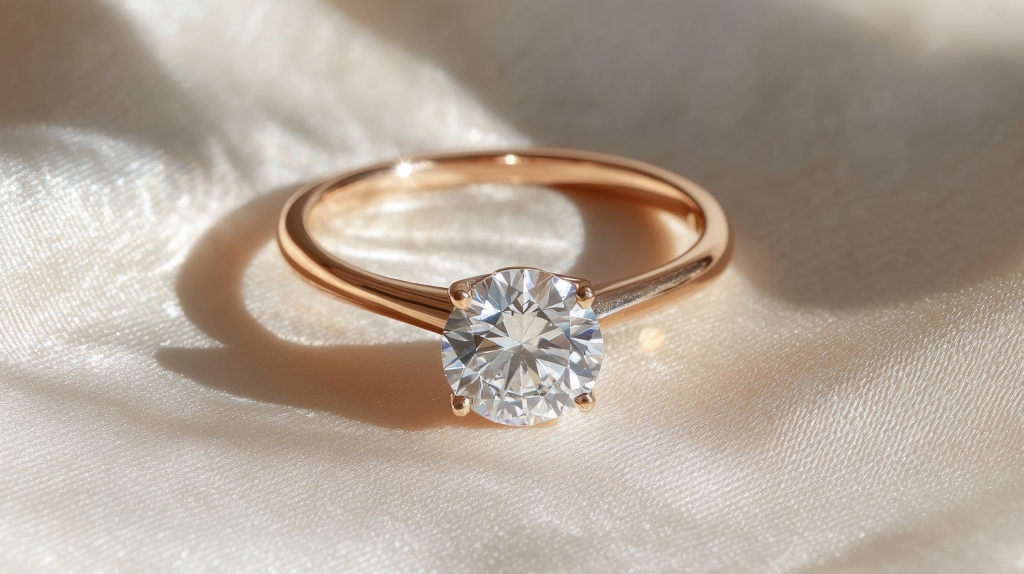
Platinum: The Premier Pick
Platinum is naturally sturdier, heavier, and denser than gold. This means that it does not need to be alloyed with other metals to the same extent as gold. Platinum rings are typically made from 95% pure platinum. It also has a more substantial feel thanks to its density.The negligible percentage of non-platinum metal in a platinum ring may be iridium, cobalt, or tungsten. These are other extremely durable metals that help platinum retain its strength and contribute to its impressive sheen.
Platinum is naturally white, eliminating any need for rhodium plating. It will keep up its shine and striking white color for many years with minimal maintenance.
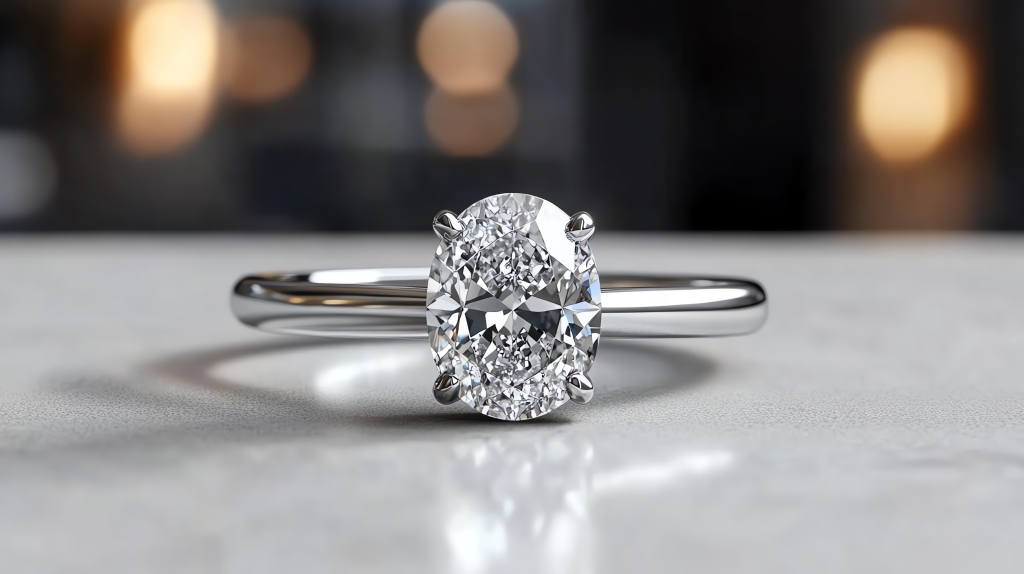
Maintenance and Durability Over Time
Like any metal, gold will dull over time. The gold itself isn’t what dulls, it’s the alloys within the gold. They will dull as they are exposed to oxidation and everyday wear and tear. The best way to care for dull gold is to take it to a local jeweler for a professional polish.If you like white gold, keep in mind that it will need to be rhodium plated. Rhodium plating is a process by which rhodium–a rare, valuable, bright white metal–is applied to a white gold engagement ring to improve its appearance and durability. This is necessary because, since gold is not naturally white, a white gold ring will dull over time. It typically dulls much faster than yellow or rose gold.
Rhodium plating is not a difficult or time-consuming process, and almost any jeweler can do it. However, it is maintenance! If you’d rather not bring your engagement ring in for rhodium plating every 1-2 years, then white gold may not be the best choice for you.
Despite its natural white color, platinum is known to eventually develop a patina. This refers to a subtle dulling effect that develops from exposure to everyday wear-and-tear. It’s not tarnish, but it does give the metal a look that some describe as “frosty.” Some people like the platinum patina and choose not to treat it. But if you aren’t a fan, you can bring your platinum jewelry to a professional jeweler to have it polished.
Whether you have a gold ring or a platinum ring, you can perform basic cleanings at home using a mild solution of dish soap and lukewarm water. We recommend cleaning your ring at home once every 4-8 weeks, and getting a professional cleaning done every 6-12 months at your local jewelry store.
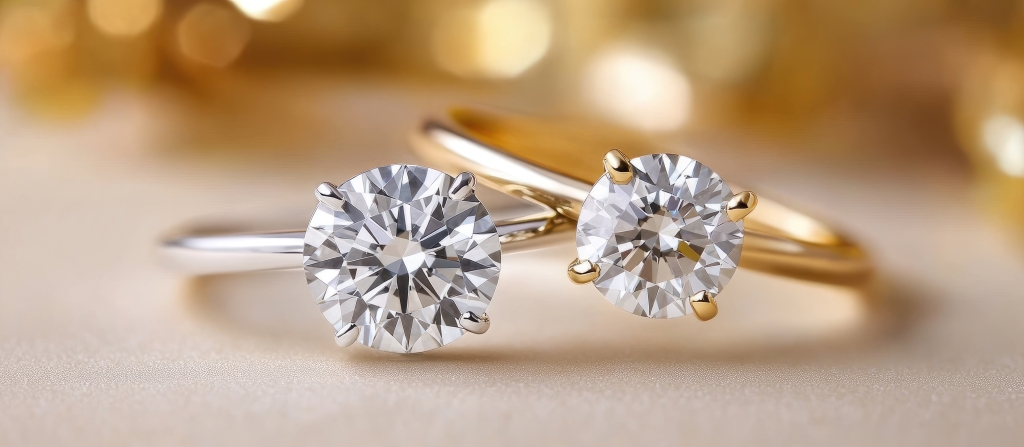
Cost Comparison
Platinum is almost always more expensive than gold due to its rarity and density. Scientists estimate that there is 15-30x less platinum on earth than there is gold. That’s a significant difference, and the price of platinum reflects that! Platinum is found in fewer locations across the globe, while gold can be mined on every continent except Antarctica.Gold is an exceptionally high-quality and attractive metal for a (generally) lower price. However, the value of gold has been skyrocketing in recent years. In some instances, gold jewelry may be more expensive than platinum jewelry. This is still quite rare, though, so if you’re looking for a more budget-friendly metal, gold is going to be your best bet.
Skin Sensitivity and Allergies
The amount of non-gold metals used in a gold alloy is usually so insignificant that it does not irritate those with metal allergies. However, it’s still technically a possibility, especially if your allergies are severe. If you are very sensitive to a certain type of metal, you may want to test out a gold ring before committing to it. You may also do better with a higher karat gold, like 18k.Platinum is a great, hypoallergenic option for those with serious allergies since it is so pure. Though it’s more expensive, the higher up front cost will be worth it to keep you safe and comfortable. Your engagement ring should make you happy, not itchy!
Metal Color
Gold engagement rings may come in one of three colors: yellow, rose, or white gold. Many people love the looks of yellow or rose gold. These are colors you can’t get with platinum, which is always white. So if you have a strong color preference, gold may be the best choice for you.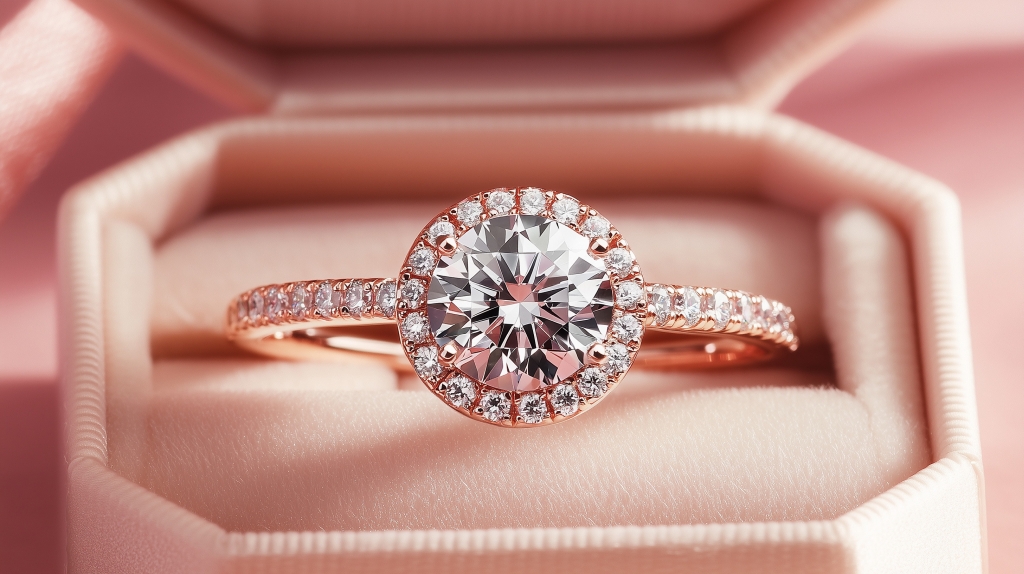
There are subtle differences between white gold and platinum, believe it or not. Platinum is more of a true silvery-white, while white gold may be slightly off-white. If you let your white gold ring go without rhodium plating for long enough, it may wear down to reveal a yellowish tinge. Platinum is also brighter than white gold. If a stunning shine is important to you, then you might want to opt for a platinum ring.
Your Dream Engagement Ring Awaits at Ellis Jewelers in Concord, NC!
We hope that this blog answered some of your questions about the differences between gold and platinum, from cost to durability and more. Ultimately, every aspect of your engagement ring is a deeply personal decision. That includes the type and color of metal that you choose. There is no “right answer” here–it’s all about what you like best in style and substance.At Ellis Jewelers, it’s our goal to match every bride-to-be with her ideal engagement ring. Whether it’s gold or platinum, we’re here to answer any questions you may have and guide you through our full collection of engagement rings until we find the one that’s meant for you. We warmly invite you to visit our downtown Concord, NC store or start your engagement ring shopping journey on our website!

